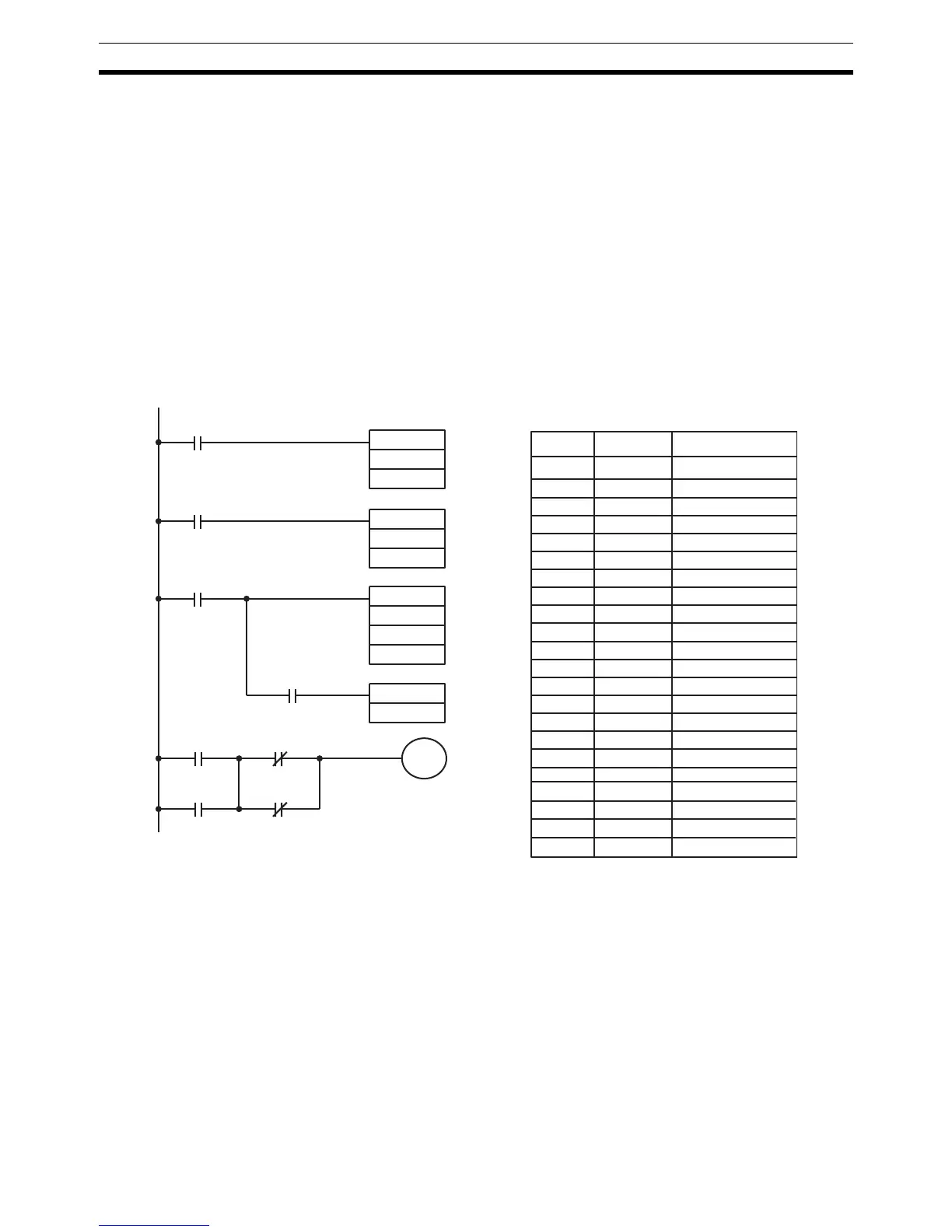390
Special Instructions Section 5-28
Note If 8 characters are not needed in the message, input “0D” after the
last character.
Determining Monitoring
Time
The procedure below can be used to automatically set the monitoring time, T,
under actual operating conditions when specifying a word operand for T. This
operation cannot be used if a constant is set for T.
1,2,3... 1. Switch the CQM1H to MONITOR Mode operation.
2. Connect a Peripheral Device, such as a Programming Console.
3. Use the Peripheral Device to turn ON control bit AR 2508.
4. Execute the program with AR 2508 turned ON. If the monitoring time cur-
rently in T is exceeded, 1.5 times the actual monitoring time will be stored
in T. FAL(06) errors will not occur while AR 2508 is ON.
5. Turn OFF AR 2508 when an acceptable value has been stored in T.
Example In the following example, the FPD(––) is set to display the bit address and
message (“ABC”) when a monitoring time of 123.4 s is exceeded.
FPD(––) is executed and begins monitoring when LR 0000 goes ON. If LR
0015 does not turn ON within 123.4 s and IR 10000 through IR 10003 are all
ON, IR 10002 will be selected as the cause of the error, an FAL(06) error will
be generated with an FAL number of 10, and the bit address and preset mes-
sage (“10002–1ABC”) will be displayed on the Peripheral Device.
MOV(21)
HR 15
#4142
SR 25315
Address Instruction Operands
00000 LD 25315
00001 MOV(21)
# 4142
HR 15
00002 LD 25315
00003 MOV(21)
# 430D
HR 16
00004 LD LR 0000
00005 FPD(−−)
# 0010
# 1234
HR 10
00006 AND 25504
00007 INC(38)
DM 0100
00008 LD 10000
00009 OR 10001
00010 LD NOT 10002
00011 OR NOT 10003
00012 AND LD
00013 OUT LR 0015
FPD(−−)
#1234
#8010
HR 10
MOV(21)
HR 16
#430D
SR 25504
(CY Flag)
SR 25315
LR 0000
INC(38)
DM 0100
10000 10002
10001 10003
LR 0015

